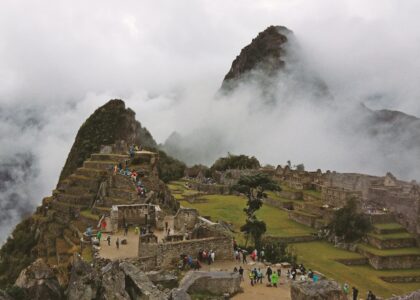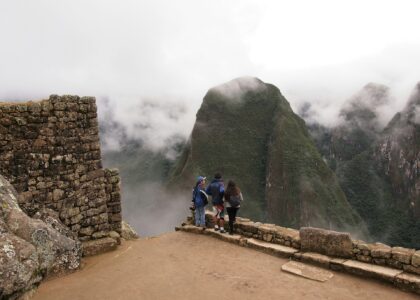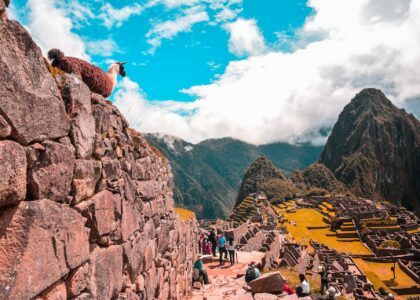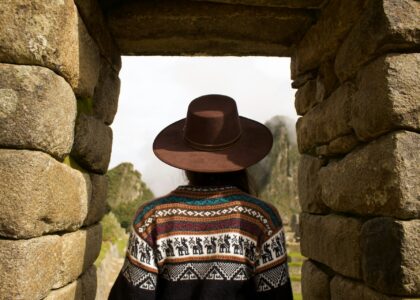The Machu Picchu You’ve Never Heard Of
Deep in the cloud forests of northern Peru lies Kuelap, a towering fortress built by the mysterious Chachapoya people — the “Warriors of the Clouds.”
Older than Machu Picchu.
Massive stone walls.
Hidden for centuries.
And yet few travelers know it even exists.
Here’s your complete guide to discovering Kuelap, Peru’s hidden gem in the clouds.
Who Were the Chachapoya?
Before the Incas ruled Peru, the Chachapoya flourished in the Andean cloud forests.
They were skilled builders and fierce warriors, known for cliffside tombs, sarcophagi, and mountain fortresses. Though eventually absorbed into the Inca Empire in the late 15th century, the Chachapoya left behind awe-inspiring monuments — and Kuelap is their crown jewel.
What is Kuelap?
- Type: Fortress and urban center
- Built: Between the 6th and 11th centuries AD
- Material: Limestone blocks weighing up to 3 tons
- Location: 9,842 feet (3,000 meters) above sea level in the Amazonas region
Kuelap includes over 400 structures enclosed by a massive elliptical wall — parts of which rise nearly 60 feet (20 meters).
Fun fact: Kuelap’s wall is longer than the Great Wall segment at Mutianyu, China!
How to Get to Kuelap
- Fly into Jaén (Cajamarca) or Chachapoyas from Lima
- Drive to Nuevo Tingo, the town at the base of the ruins (2–3 hours)
- Take the cable car — Peru’s first aerial tramway, a scenic 15-minute ride offering incredible views of the cloud forest
Tip: The cable car journey is an experience in itself — don’t miss the views!
Highlights of a Visit to Kuelap
1. The Main Fortress Walls
Limestone walls up to 60 feet high with only three narrow entrances, likely designed for defense.
Tip: Walking through the original gateways feels like entering a lost world.
2. Circular Houses and Iconography
Inside, you’ll find hundreds of round stone house bases. Some display geometric friezes in zigzag and diamond shapes — possibly linked to agriculture or water.
3. The Torreón (Watchtower)
This three-story structure may have served ceremonial or military purposes and offers stunning panoramic views of the ruins.
4. Archaeological Secrets
Unexcavated tombs and layers of construction suggest Kuelap was used for centuries. Much of the site remains unexplored, adding to its mystery.
When to Visit Kuelap
- Best time: May to September (dry season)
- Avoid: November to March (rainy season brings slippery trails and possible cable car interruptions)
Tip: Mornings are usually clearer before the clouds roll in.
What to Bring for a Visit
- Comfortable hiking shoes
- Light rain jacket
- Water and snacks
- Hat, sunscreen, and layers
- Camera with wide-angle lens
Kuelap vs. Machu Picchu: Quick Comparison
| Feature | Kuelap | Machu Picchu |
|---|---|---|
| Era | Pre-Inca (6th–11th c.) | Inca (15th c.) |
| Architecture | Massive fortress walls | Refined royal estate |
| Tourists | Few | Many |
| Access | Remote + cable car | Train + bus |
| Atmosphere | Remote, mystical | Majestic, bustling |
Verdict: If you’re seeking ancient mystery without the crowds — Kuelap delivers.
Combine Kuelap with Other Northern Peru Highlights
- Gocta Falls: One of the world’s tallest waterfalls
- Karajía Sarcophagi: Human-shaped tombs on cliff ledges
- Revash Tombs: Bright red cliffside burial homes
- Leymebamba Museum: Over 200 mummies and Chachapoya artifacts
Final Thoughts: Why Kuelap Deserves to Be on Your Bucket List
Kuelap isn’t just Machu Picchu’s lesser-known cousin — it’s a towering symbol of a forgotten civilization.
It stands as a testament to ingenuity, endurance, and a rich history still being unearthed.
For travelers willing to go beyond the mainstream, Kuelap offers something extraordinary: mystery, magic, and a connection to a world few have touched.
Looking to explore Peru beyond the ordinary?
At Explorify Expeditions, we design custom journeys to incredible sites like Kuelap, blending history, culture, and adventure.
📩 Contact us today and let us help you discover the secrets of northern Peru.






